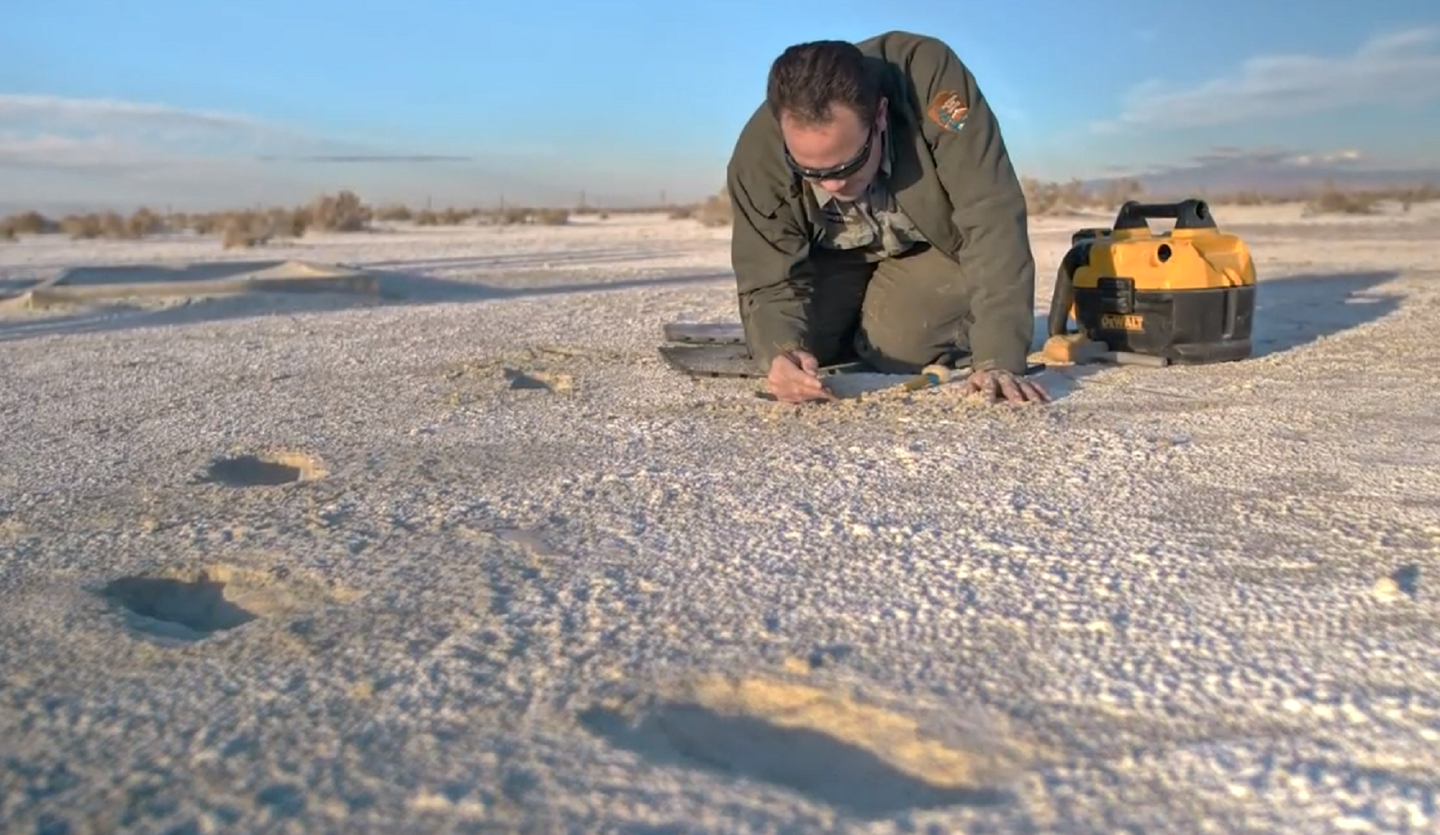The vast, sun-soaked expanses of White Sands National Park in New Mexico have, over the recent years, unfurled a compelling tale that contests previous theories about when Homo sapiens first set foot on the North American continent. Conclusive research attests that the historical footprints nestled within these sands date between 21,000 to 23,000 years ago, effectively challenging the erstwhile belief that human occupation in North America commenced merely 16,000 years ago.
These footprints, an enduring testament to the early presence of humans during the last Ice Age, witnessed an era when mammoth ice sheets, stretching even to what we know today as Illinois, veiled the continent in a frosty embrace. The profound glaciation, a seemingly inhospitable epoch, didn’t deter our ancestors from establishing a foothold on this new, alien land.
In a 2021 study, researchers aimed to cast light on this anthropological mystery by dating these footprints, resorting to seeds of spiral ditchgrass – a common aquatic plant – embedded in the adjacent sediment, thereby placing them in the 21,000 to 23,000 years ago bracket. Radiocarbon dating, a technique delving into the decay of the carbon-14 isotope in organic matter, provided the lens through which this timeframe was viewed. However, the technique, especially considering the potential for aquatic plants to assimilate dissolved carbon and potentially skew dating estimates, was greeted with skepticism by sections of the scientific community.
Jeff Pigati, co-lead author of the research and a research geologist at the U.S. Geological Survey (USGS) in Denver, emphasized the necessity of an analytical convergence. “Every dating technique has strengths and weaknesses,” he noted, underscoring the robustness of age results that emerge when “three different techniques all converge on the same age range.” The initial results were, indeed, controversial, triggering a deeper, independent evaluation of the seed ages to garner community confidence, as articulated by co-lead author and USGS research geologist Kathleen Springer.
Homo sapiens, originating from the landscapes of Africa over 300,000 years ago, charted a global journey, with scientists positing that they ventured into North America from Asia, navigating through a land bridge once conjoining Siberia to Alaska. Matthew Bennett, a professor at Bournemouth University and co-author of the study, mentioned that the established narrative posited human occupation commencing roughly 16,000 years ago, thus rendering the newfound data an intriguing deviation from the earlier hypothesis.
To validate the earlier controversial findings and pave a robust path towards community acceptance, the researchers expanded their methodologies in the recent study. Not only did they employ radiocarbon dating on conifer pollen (skillfully circumventing the aquatic plant concern by isolating thousands of conifer pollen grains from similar sediment layers as the ditchgrass seeds) but also utilized optically stimulated luminescence dating on quartz grains within the sediments bearing the footprints. This technique measured the energy trapped since the grains were buried, establishing a minimum age of approximately 21,500 years for the sediment layers.
A total of 61 footprints, nestled at what was once a lakeshore, indicated the scenarios where people tread on a mosaic of wet and dry ground, traversing through mud, silt, and sand in the lake-edge environment. As Springer elucidated, footprints in such settings, upon being veiled with another sediment layer, become timeless relics, awaiting discovery through the sands of time.
Bennett reflected that the findings reaffirmed the chronology posited in 2021, albeit through independent methodologies and labs. Thus, the footprints at White Sands not only serve as an archaeological revelation but also silently underscore the resilience and exploratory spirit that has defined our species since time immemorial.
READ MORE:
